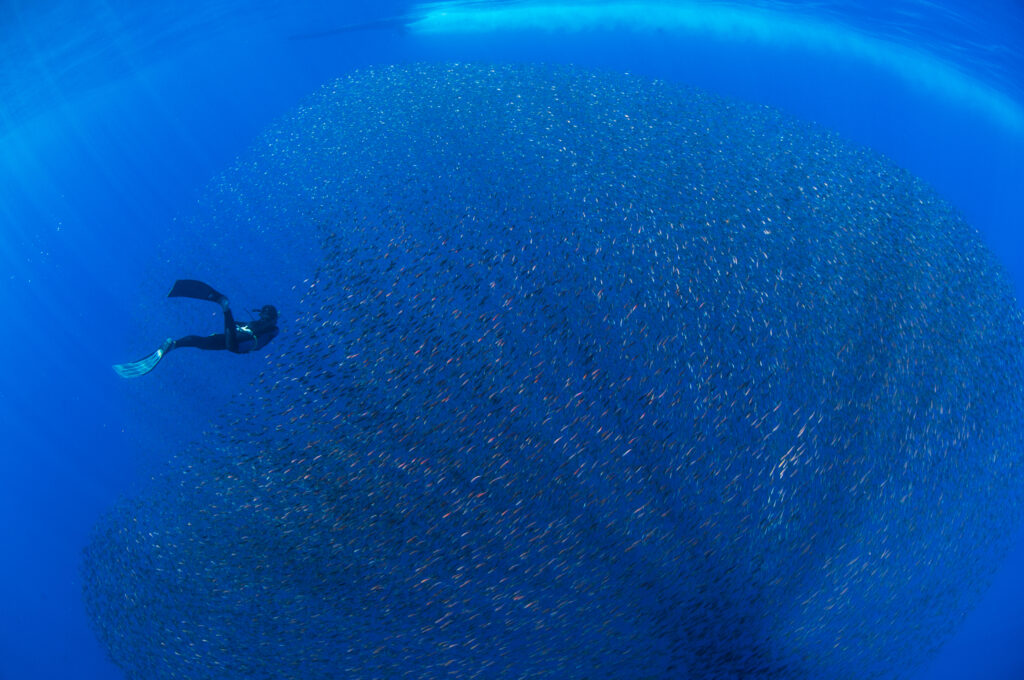What is a Manifold?

A manifold in scuba diving is an essential component that plays a crucial role in connecting multiple tanks to provide divers with a continuous and reliable air supply. This device allows for the seamless integration of two or more tanks, ensuring that divers can manage their air reserves efficiently and safely. Manifolds are particularly important in technical and deep diving, where extended bottom times and redundancy in air supply are critical. By linking tanks together, a manifold provides divers with the flexibility to access a larger volume of air, enhancing their underwater experience and safety.
What is a Diver Propulsion Vehicle?

A Diver Propulsion Vehicle (DPV), also known as an underwater scooter, is a motorized device used by scuba divers to increase their range underwater with minimal physical exertion. By holding onto the DPV, divers can be pulled through the water at various speeds, allowing them to cover greater distances and access dive sites that would otherwise be challenging to reach. DPVs are used in various types of diving, from recreational to technical and even military applications, providing significant benefits in terms of efficiency and safety.
What is a Quick Link?

A quick link, often used in scuba diving, is a small but crucial piece of hardware designed to connect various components of diving gear quickly and securely. Its design resembles a chain link but with a threaded closure, which allows for easy attachment and detachment. Quick links are indispensable in diving due to their strength, reliability, and ease of use, providing divers with a versatile tool for securing equipment such as hoses, accessories, and other essential items. Their simplicity and efficiency make them a preferred choice over other types of connectors.
What is Open Water Diving?

Open water diving is a fundamental form of recreational scuba diving, characterized by diving in natural bodies of water such as oceans, seas, and lakes. Unlike confined water diving, which takes place in controlled environments like swimming pools, open water diving offers divers the opportunity to experience the vastness and diversity of underwater ecosystems. This type of diving typically involves greater depths and more variable conditions, making it both a thrilling and challenging pursuit for enthusiasts of all levels. The concept of open water diving is integral to the sport, providing the foundation for various specialized diving activities and advanced certifications.
What is an Adjustable Buoyancy Life Jacket?

An adjustable buoyancy life jacket (ABLJ) is a crucial piece of equipment in scuba diving, designed to help divers manage their buoyancy underwater. Buoyancy control is vital for a safe and enjoyable diving experience, as it allows divers to maintain neutral buoyancy, ascend, or descend smoothly. The ABLJ combines the functionality of a life jacket with the capability to adjust buoyancy, making it an essential tool for divers of all levels. This article will delve into the history, design, types, operational use, safety features, and overall impact of ABLJs on scuba diving.
What is a Glowstick?

A glowstick is a self-contained, short-term light source that produces light through a chemical reaction known as chemiluminescence. Originally developed for military and emergency use, glowsticks have become essential tools for various recreational activities, particularly in scuba diving. These devices are popular among divers for their ability to provide reliable illumination underwater, where traditional lighting options may be impractical or unsafe. Glowsticks are valued for their simplicity, durability, and the immediate bright light they emit, which can be critical for safety and communication during night dives or in low-visibility conditions.
What is Weight in Scuba Diving?

Weight is a fundamental concept in scuba diving, playing a crucial role in a diver’s ability to achieve neutral buoyancy and maintain control underwater. In the context of scuba diving, weight refers to the additional mass that divers carry to counteract the buoyancy of their bodies and equipment. Proper weighting is essential for divers to descend, ascend, and maintain depth with ease, ensuring a safe and enjoyable underwater experience. This article delves into the physics of weight in water, the types of weights used, how to calculate the required weight, and the importance of weight placement and safety considerations.
What is a Whip?

In the context of scuba diving, a whip refers to a flexible hose or tube used to transfer high-pressure air or other gases from one source to another. Whips are integral to diving operations, facilitating the safe and efficient management of breathing gases. These hoses connect various pieces of diving equipment, such as air tanks, regulators, and buoyancy control devices (BCDs), ensuring divers have a reliable supply of air while underwater. Understanding the role and functionality of whips is crucial for maintaining safety and performance during scuba diving activities.
What is Decompression Illness?

Decompression illness (DI) is a significant condition that affects scuba divers and can have serious health implications if not properly managed. It encompasses a range of ailments resulting from changes in pressure, particularly during ascent after a dive. Understanding decompression illness is crucial for divers, as it helps in preventing, recognizing, and treating this potentially life-threatening condition. This article will cover the physiology, types, causes, risk factors, prevention strategies, diagnosis, treatment, and implications of decompression illness.
What is Visual Inspection?

Visual inspection in scuba diving refers to the systematic examination of diving equipment to ensure its safety and functionality. This process is vital in identifying potential issues that could compromise a diver’s safety. Given the high-risk nature of scuba diving, regular visual inspections are crucial for preventing equipment failure that can lead to serious accidents. This article delves into the history, purpose, techniques, common issues, and standards associated with visual inspections in the diving industry.
